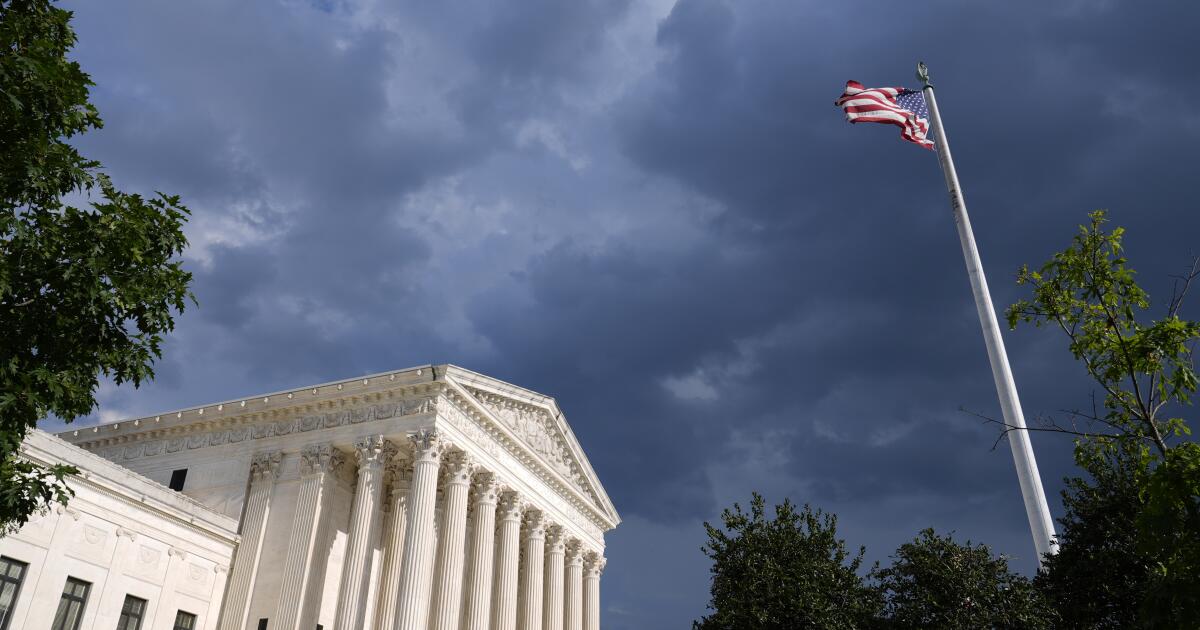WASHINGTON — The Supreme Court could help the GOP maintain control of the House of Representatives next year by giving Republican-led states the ability to redraw congressional districts currently held by black Democrats.
That prospect formed the backdrop Wednesday as the justices debated the future of the Voting Rights Act in a Louisiana case.
Trump administration The chief lawyer in the courtroom called He has the power to rule that the drawing of congressional districts and state legislatures should be guided by party politics rather than racial justice.
“This Court has determined that race-based affirmative action in higher education must end,” Solicitor General John Sauer wrote in his brief. The same is true, he said, of using the Voting Rights Act to determine legislative districts that are most likely to elect a black or Hispanic candidate.
Too often, he said, civil rights law “is applied as a form of selective affirmative action on the basis of race to undermine the state's constitutional commitment to political goals.”
The court's conservatives are leaning in that direction and seeking to limit the use of race in drawing district lines. But the five-member majority did not reject the use of race to draw district boundaries.
But the Trump administration and Louisiana Republican leaders have argued that now is the time to do so.
If the court's conservatives rule in the coming months, it would allow Republican-led Southern states to redistrict a dozen or more black Democrats.
“There is cause for concern,” said Harvard law professor Nicholas Stephanopoulos. “The consequences for minority representation are likely to be devastating. In particular, states with unified Republican governments will be given the green light to flip as many districts with Democratic minority opportunities as possible.”
Such a decision would also undermine the Voting Rights Act as it has been understood since the 1980s.
Originally passed in 1965, this historic measure put the federal government on the side of blacks when registering to vote and voting.
But in 1982, Republicans and Democrats in Congress took notice that these new black voters were often prevented from electing anyone to office. White legislators could draw maps that show whites in the majority in all or nearly all districts.
Seeking change, Congress amended the law to allow litigation when discrimination results in minority voters being “less able…to elect representatives of their choice.”
Decades later, the Supreme Court and Department of Justice pressured states, and the South in particular, to create at least a few congressional districts that could elect a black candidate. These legal challenges were based on evidence that white voters in the state would not support a black candidate.
But since he joined the court in 1991, Justice Clarence Thomas has argued that drawing districts based on race is unconstitutional and should be banned. Justices Samuel A. Alito, Neil M. Gorsuch and Amy Coney Barrett dissented from Thomas two years ago when the court, by a 5-4 vote, confirmed Alabama's 2nd Congressional District, which elected a black Democrat.
Chief Justice John J. Roberts wrote the opinion. Justice Brett M. Kavanaugh cast the deciding fifth vote but also said he was open to the argument that “racial redistricting cannot continue indefinitely into the future.”
This issue is currently being considered in court. in the Louisiana case.
It has six congressional districts and about a third of its population is black.
Before this decade, the New Orleans area had elected a black representative and, in response to a voting rights lawsuit, was ordered to carve out a second district in which a black candidate had a good chance of winning.
But to protect its top House Republicans—Speaker Mike Johnson and Majority Leader Steve Scalise—the state drew a new, stretched district that elected Rep. Cleo Fields, a black Democrat.
Now the state and the Trump administration argue that the court should overturn the district because it was drawn along racial lines and free the state to replace it with a white Republican.








